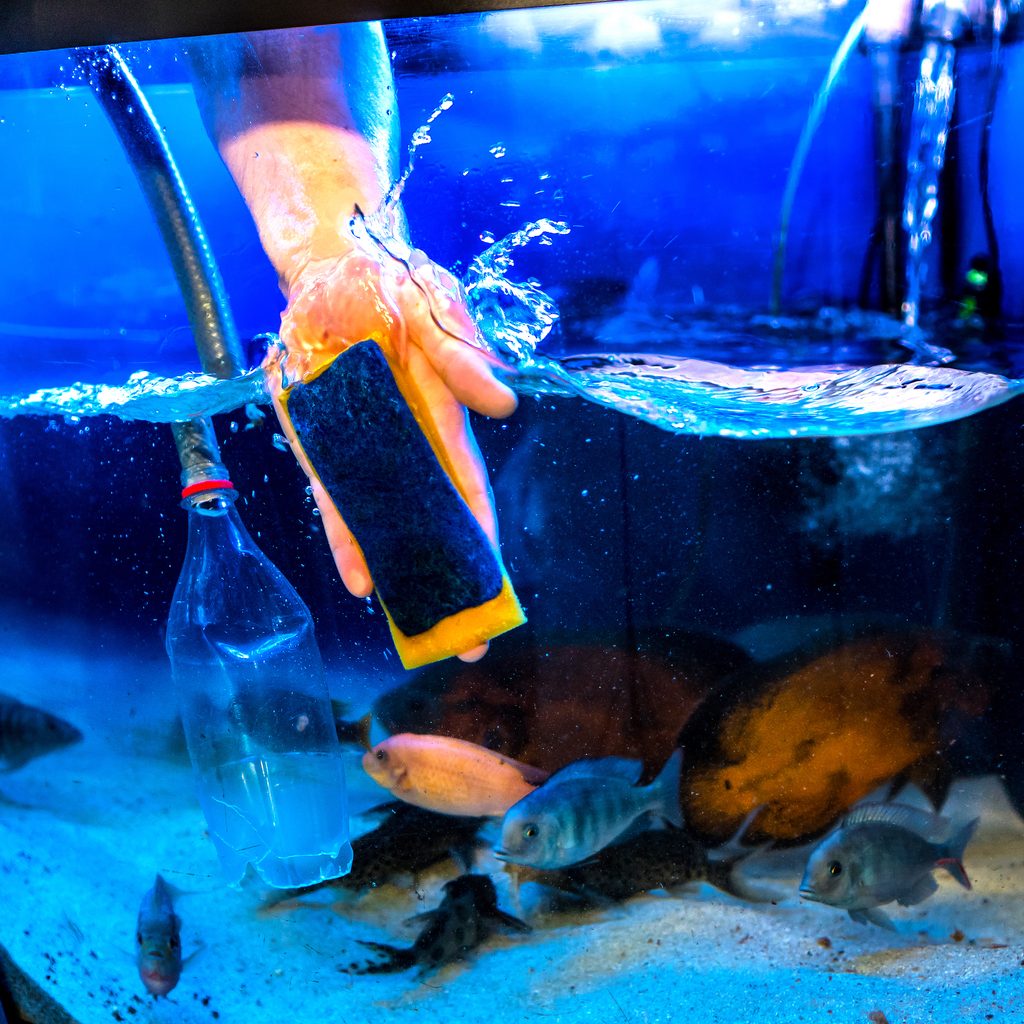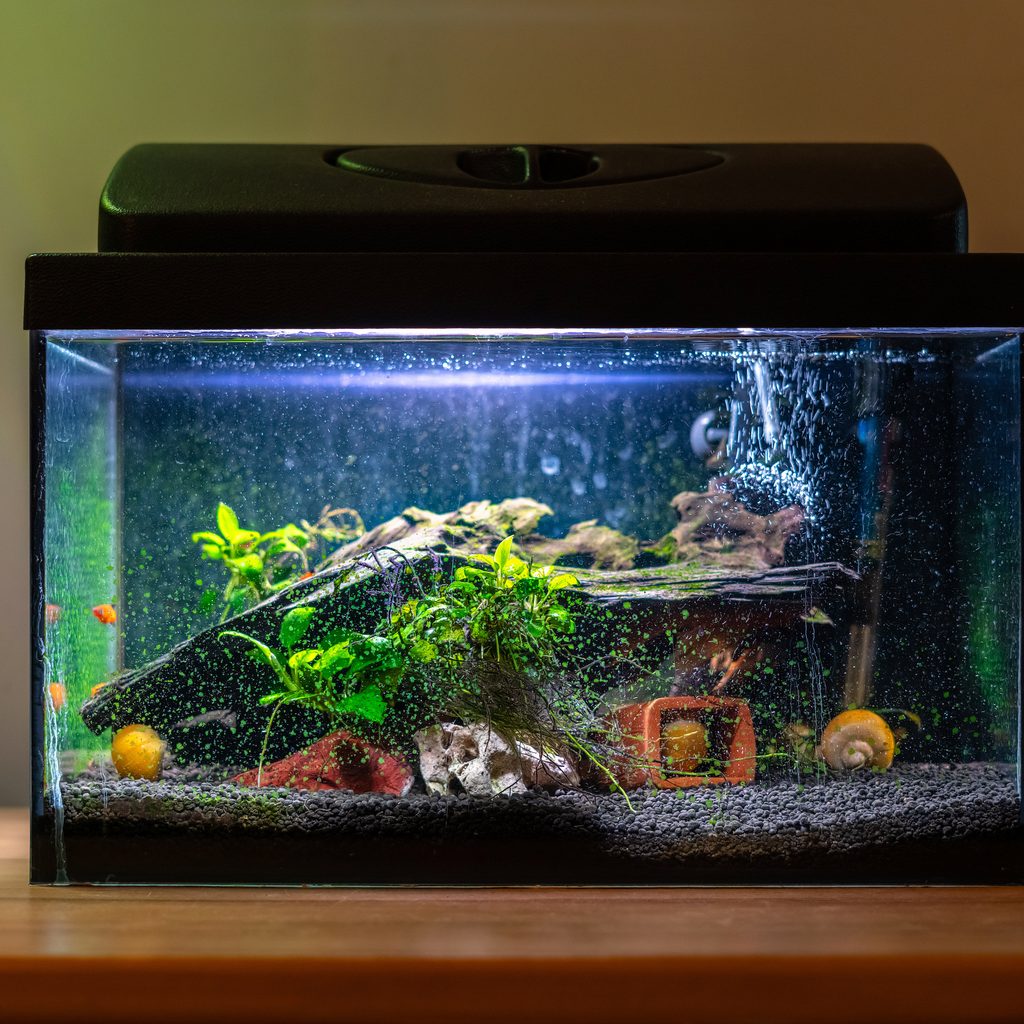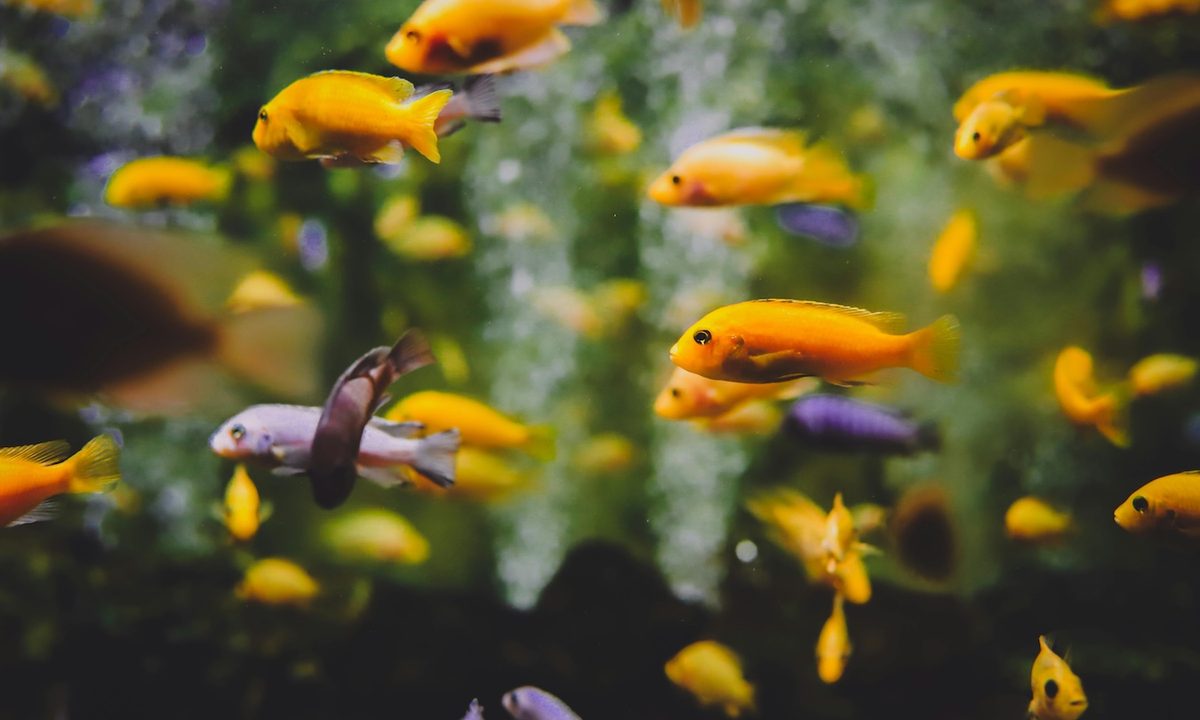It’s one more thing to add to the seemingly endless aquarium checklist, but you need to stay on top of your nitrate levels. You’ll never get them to zero (though if you do, let us in on the secret), but keeping the aquarium chemicals in balance will greatly increase your fish’s life span. While not quite as dangerous as ammonia, out-of-control nitrates can kill fish. Proper testing, cleaning, and filtering will enable you to reduce nitrates and keep your fish healthy. Keep reading for more tips on how to reduce nitrates in aquariums.

What are nitrates?
Think back to 10th-grade biology, and you may recall the nitrogen cycle. In your tank, this is the process by which nitrogen moves through multiple forms into nitrate, the least harmful. It begins with fish waste or decaying plants that give off ammonia, which is extremely deadly and should be kept at zero ppm.
Small bacterial colonies then turn this into nitrite (also harmful) and then nitrate (much better). This cycle must occur, or your tank occupants would die from ammonia poisoning, but that does leave you nitrates to contend with. When you first set up your tank, the nitrogen cycle will run to establish your bacteria and prep the water for your fish to thrive. Don’t panic if you notice cloudy water during this time — it’s all part of the process.

Why are nitrates harmful?
Unlike with nitrites or ammonia, your fish will not die from a little nitrate in the aquarium. However, high levels can lead to problems, especially with their immune systems. In a high-nitrate situation, you may notice your fish slowing down and becoming lethargic or sickly. Extreme nitrates can even stunt fish growth or lead to skin problems such as sores.
Young fish will suffer the most, and older fish will be much less likely to reproduce. Anything upward of 100 ppm should be taken as an emergency. Don’t forget, a chemical problem might indicate other issues, too, so you may see additional signs of stress in your fish not directly related to nitrates.

How to monitor nitrates
As with other chemical levels in the aquarium, you’ll need to keep an eye on your nitrates. A freshwater aquarium may go along fine with a higher level than a saltwater aquarium would. We recommend under 10 ppm, though this can vary slightly based on your setup.
Step 1: Get prepared. Before you even buy your fish, check your water source, beginning with what comes out of your tap. It may exceed optimum nitrate levels already, in which case you should find different water to use in your aquarium.
Step 2: Test frequently. When you first set up your tank and your nitrogen cycle hasn’t completed, you must run a test every two days. Once you’re stable, bump that down to every week or so, preferably while doing a partial water change.
Step 3: Monitor your plants. You can also look for signs that the nitrates have gotten out of control, like a particularly big algae bloom.

How to reduce nitrates in aquariums
Once you have your tank established, you'll need to work to keep this pesky chemical in check.
Step 1: Clean the tank. The best way to keep nitrates down is to keep your tank clean. This means promptly removing any old plants, deceased fish, or leftover food. Remember, fish waste and dead leaves will drastically increase many of your tank levels to unsafe numbers.
Step 2: Use your green thumb. Plants in general aid in nitrate reduction, and when carefully maintained, will improve your tank overall.
Step 3: Add new water. Water changes are the most crucial piece of keeping a healthy aquarium. But don’t remove too much water, or you’ll have to start the whole process over again.

What is the best nitrate remover?
You want to stay on top of cleaning and filtering, including partial water changes, no matter what. But when your perfect system breaks down, it's OK to go to backup solution. One option is to add something to the water that helps soak up waste, such as SeaChem Purigen.
On the flip side, when you first start a tank, you may want to help introduce the bacteria that jump starts the nitrogen cycle. That's right, you're adding in some microbes to help along your tank and get it healthy. Do your research carefully as some claims may be overblown on all of these products.
Like so many other parts of being an aquarist, maintaining nitrate levels requires strict observation and a careful cleaning schedule. The most crucial time is when you start a new tank. Even aquarium pros sometimes lose fish when first creating a habitat. However, a little vigilance goes a long way, and hopefully, you’ll find your chemical composition keeping itself running smoothly with minimal intervention from you after a few weeks.




